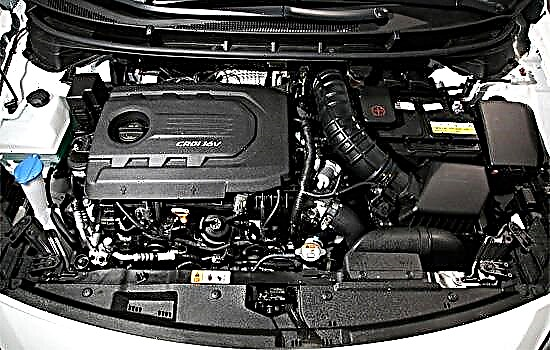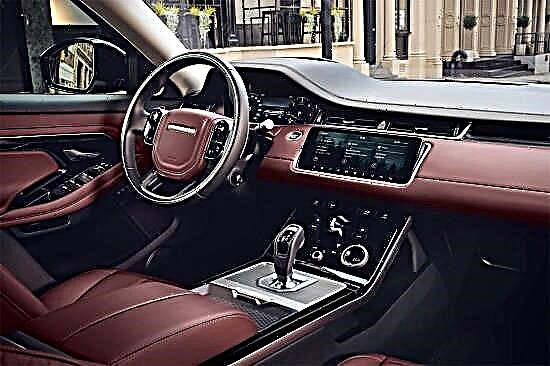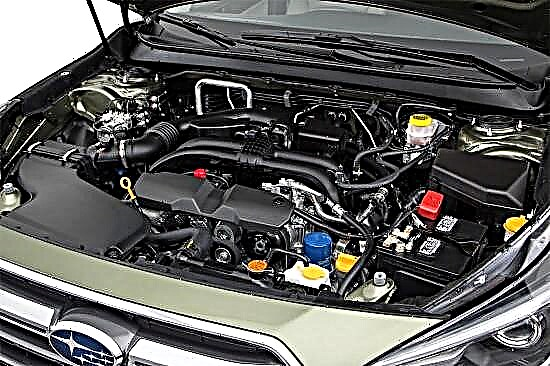Ratings of cars and auto products
Reviews, comparisons & tips for motorists
The lighting technology of a car has a lot of types of bulbs, and each has its own functions and purpose. Lamps illuminate the interior, illuminate the glove compartment, trunk, engine, dimensions warn of upcoming car maneuvers, some are used as signal lamps, but there are the most important ones - for illuminating the road - headlights. The headlamp is a part of the car, without which driving in the dark is almost impossible. The safety of the driver, the integrity of the car, as well as the preservation of the health or life of a pedestrian depend on this device. Needless to say, the quality of the roadway leaves much to be desired: huge pits closer to the edge or many small pits in the middle of the road - both in any case kill the chassis, wheels, shock absorbers. Therefore, you should carefully choose which type of lamps to put in the headlights: halogen, xenon or LED, and which is best suited to the specific operating conditions of the car.
Comparison of different types of headlights.
Lamp device
Any vehicle is equipped with headlights. Depending on the size, the number of headlights can be different:
- one (for motor vehicles);
- two (for cars, small cars);
- three or more (for huge trucks, construction equipment, special-purpose vehicles).
The design of the headlamp is, in principle, the same for any type of transport, but not as simple as you might think. Car headlights are located along the edges of the horizontal axis of the vehicle. The headlamp consists of four parts: emitter, reflector, diffuser, housing. A light emitter is a lamp that stands in the headlight, it is the only light source, and the headlight does not work without it. Depending on the main material from which it is made, there are several types of such lamps:
- incandescent lamp;
- halogen;
- xenon;
- LED.
Next comes the reflector. It reflects the light that the lamp emits. The reflector comes in many shapes and variations. It all depends on the design of the car, the style in which the front part is made, the location of the headlight, but most often the cone-shaped reflector. It is made of glass, plastic, other polymer material, on which there is a thin layer of aluminum spraying. Light, falling on such a coating, is reflected by many rays, increasing its brightness. Reflectors can be either the simplest or with complex specific adjustments. Simple cones (parabolic) only reflect rays in different directions, they cannot be corrected in terms of brightness, intensity, direction.
Slightly more complex reflectors (free form) are also static in this regard, but due to the division into several zones and a stepped design, the light is reflected in separate beams, and therefore it becomes more distinct, when scattered, it does not lose light flux so much, and passing cars are less blind. There are also lens headlights. Their reflectors have a specific elliptical shape and are additionally equipped with a curtain that cuts off the flow of light. That is, the light in the headlamp itself is reflected several times before hitting the lens and then onto the road.
The role of the diffuser is also great. Usually it is made of glass or polymer, similar in appearance and characteristics to it. Protects the headlight from possible external damage, scatters light and directs it to the desired point. There are notches or indentations on the diffuser, through which you can get the desired angle of illumination. Such scatterers are not used very often now. More popular are simple diffusers without optical complements, made of ordinary plastic. They do not direct light, but simply perform the main function of protecting against dirt, water, mechanical external damage.
Functional principle of halogen backlight
The halogen light source works like an incandescent lamp. Inside it is a tungsten filament, which heats up with electricity, as well as a pair of halogen elements (most often bromine or iodine). Under the influence of these vapors, tungsten atoms do not settle as quickly as in an incandescent lamp, begin to move around the filament and more often stick to it. The light from such a lamp has a yellowish tint. It works well on AC and DC.
Xenon light sources
Xenon light sources differ from halogen light sources in a shade of color, and also have differences in service life. There is a great difference in the principle of operation - in a xenon lamp, tungsten also acts as a catalyst, but thorium is added to it, and the whole space is filled with xenon. The action of electricity in a xenon lamp creates a plasma arc near the cathode. This lamp emits bright white light, which is as close as possible to daylight - 3000 lumens.
There are short-arc, long-arc (tubular), ceramic xenons. Accordingly, lamps with a short arc, where the electrodes are close to each other, and the bulb is like a ball, lamps with a long arc, where the electrodes are at a distance in a bulb that looks more like a tube, ceramic lamps are also with a short arc, but in a ceramic shell, and therefore safe and do not require adjustment during installation. For the first time, such lamps began to be used in the German automotive industry.
LED car lighting
LEDs have become very popular lately. It is a semiconductor that emits optical radiation when electricity passes through it. An LED crystal emits a specific color of light output. The principle of operation of such a lamp provides for the passage of current through a special transition, where the charge carriers disappear and then are replaced by the emission of photons. That is, electrons move from one level to another. The LED is connected directly to the current source, and connected to the voltage source through a resistor. It is worth noting that they do not heat up, but simply emit light. The device and the principle of operation have been actively improved recently, like the technology of quantum dots and photonic crystals.
Comparison of lamps
All kinds of headlight bulbs are in demand. The main indicators for comparison are service life, luminous flux, maintenance, cost, operating conditions. Some car enthusiasts set up whole test drives for different types of headlights under different conditions. Information about such tests can be easily found on the net. Moreover, such tests usually have a very wide range in terms of different lighting conditions, season, road quality. It is also taken into account how much the boundaries of light tremble when passing irregularities, how quickly the switching from high beam to low beam occurs, what is the maximum distance the light radiation reaches.
Advantages and disadvantages of halogen lamps
It is difficult to say which lamps better illuminate the road, and indeed perform the function assigned to them. The lamp itself can be quite good in all respects, but the headlamp design negates its merits if you choose the wrong one. Halogens are the most common light sources for headlights, because they began to be used earlier than others. In essence, they are advanced incandescent bulbs.
The use of such lamps for cars has several advantages:
- They are inexpensive. Of all the options available, halogen bulbs will be the cheapest choice.
- They are easy to replace. The lamp device does not carry any particular danger, does not require special conditions for replacement.
- They can be very compact. If the volume of the flask is small, this increases the pressure, thereby reducing the rate of evaporation of the filament.
- Lamps react normally to alternating current. They can operate on AC or DC without losing their efficiency.
The disadvantages of halogen lamps include a short service life - up to 1000 hours, in this both diodes and xenon headlights benefit from them. This is due to the fact that the return of tungsten atoms to the spiral occurs unevenly and often depends on the heating temperature, thus, the spiral inevitably collapses. It is also not very good that the optics heats up very much, does not transmit bright enough light, and therefore does not illuminate the road as efficiently.
Pros and cons of LED models
Lexus manufacturers began to use LED lamps in head lighting in 2007. In the distant light, such lamps are capable of illuminating several hundred meters. But at the same time, the light does not blind oncoming drivers. Car owners notice the concentration of light on the road without scattering or any spots.
LED headlights have many advantages over other lamps:
- They are very durable. Able to work from 10,000 to 100,000 hours. If such lamps work 8 hours per day, then they will last 34 years. It should be noted that with such a long-term operation, the crystal will lose its brightness.
- The diode consumes a minimum of energy. The load on the generator will be pleasantly low, since the crystal is a semiconductor.
- Durability and reliability. There are no sensitive parts such as tungsten filament in the lamp structure. Therefore, the LED tolerates low temperatures very well.
- The crystals provide a white glow that cannot be compared to halogens or xenons. Color is not achieved through filters or refraction, but through the source itself. White spectrum - from 2700 K to 6500 K.
It is worth noting that the most important disadvantage of LEDs is the high price. There are no offers on the market that are equal in value to xenon. There is also a problem in that the design sometimes does not provide for a sufficient number of lamps to achieve a good luminous flux. Therefore, the efficiency of the luminous flux will not always be better than analogs.
Advantages and disadvantages of xenon
Xenon-filled lamps are gas discharge lamps. The first time it was used in the BMW concern. The system of such a headlight usually includes an ignition unit and an electronic control unit. They provide the appearance of a discharge due to alternating current with a voltage of 10 - 20 kV. Often, such headlights are bi-xenon, because it is impractical to put xenon on the low and high beam separately.
The xenon versus halogen dilemma can be sorted out by considering their benefits. The advantages of halogen have already been described, so let's move on to xenon:
- The service life is much longer than halogen ones. It reaches up to 3000 hours.
- The luminous flux is much brighter than halogens. Unlike the offered 1000 - 1500 lumens, xenon has 2500 - 4000 lumens. Not only the road is well illuminated, but also the roadside.
- Lamps consume less electrical energy. They need a large discharge for a pulse to turn on, and then the lamp operates on alternating current, which does not load the generator at all.
- Low heating of optics. It can be noted that it is better - xenon or LED lamps - to indicate this parameter. Halogens are very hot compared to them.
There are, of course, drawbacks. Reduced wattage lamps are quite expensive. Xenon must be replaced in two headlights at once. Many people are afraid to use such lamps because of the use of mercury in them, considering them dangerous because of this. But its specific gravity is not high enough to harm the health of the driver. Due to contamination of the lens, the headlamp sometimes shines, interfering with the oncoming flow, or scatters light in different directions. But in terms of brightness, LED or xenon can have equal indicators. The brightness of the LEDs directly depends on their number in the headlamp. For example, Seat is equipped with 1600 - 1700 lumen diodes, which is even less than the standard xenon lamp.
Which lamps to choose for the car
To choose car lamps, you need to take into account all the advantages and disadvantages of the products offered on the market. There are inexpensive lamps with good performance and fairly effective performance. Modern cars are equipped with lighting technology that eliminates the use of a certain type of lamp.
For example, the Dacia Duster's halogen headlamp has the same performance as the xenon headlights. LEDs, on the other hand, have a pleasant hue and a very long service life. Xenon headlights are brighter in light flux than LED lamps. Therefore, before choosing a lamp in your car, pay attention to the design of the headlight itself.











